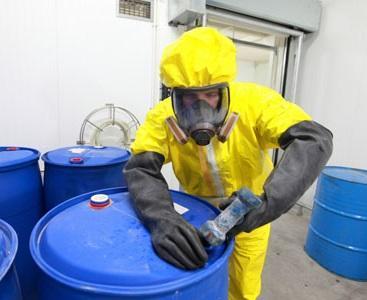As a business owner, it is your responsibility to ensure the safety and health of your employees. One important aspect of this is understanding and complying with the Hazardous Waste Operations and Emergency Response (HAZWOPER) regulations set by the Occupational Safety and Health Administration (OSHA).
Handling hazardous materials is essential to protecting your workers and the environment. Here are ten tips for businesses to help ensure the safe handling of hazardous materials in the workplace:
- Identify all hazardous materials that are present or used in your workplace. This includes chemicals, hazardous wastes, and other potentially dangerous substances.
- Determine the hazards associated with each hazardous material and the appropriate protective measures that should be taken.
- Develop and implement procedures for handling hazardous materials safely, including proper storage, transportation, and disposal.
- Provide appropriate personal protective equipment (PPE) to workers exposed to hazardous materials, such as gloves, respirators, and protective clothing.
- Train workers on the hazards of hazardous materials and the proper use of PPE.
- Label all hazardous materials clearly and accurately, including warning labels and material safety data sheets (MSDS).
- Store hazardous materials in appropriate containers and designated areas away from ignition sources.
- Transport hazardous materials in approved containers and follow all applicable regulations and guidelines.
- Properly dispose of hazardous materials in accordance with federal, state, and local regulations.
- Monitor the health of workers who may be exposed to hazardous materials through medical surveillance programs.
By following these tips, you can help ensure the safe handling of hazardous materials in your workplace and protect the health and safety of your employees. Remember, compliance with HAZWOPER regulations is essential to the success and sustainability of your business.
In addition to the above tips, it is also important for businesses to understand and comply with the various regulations and guidelines related to hazardous materials, such as the Resource Conservation and Recovery Act (RCRA) and the Hazardous Materials Transportation Act (HMTA). These laws establish specific requirements for the storage, transportation, and disposal of hazardous materials, and failure to comply can result in significant fines and penalties.
It is also important to establish emergency response procedures in case of an accidental release or spill of hazardous materials. This can include having a trained and equipped emergency response team on site, as well as developing and practicing evacuation plans.
In addition to the above tips, there are several other important considerations for businesses regarding handling hazardous materials safely in the workplace.
First, it is important to have a thorough understanding of the properties and characteristics of the hazardous materials you are working with. This includes knowing the potential hazards of each material, such as flammability, reactivity, and toxicity, as well as the appropriate protective measures that should be taken.
It is also important to have adequate ventilation in areas where hazardous materials are used or stored. This can help reduce the risk of exposure to hazardous substances and improve the overall air quality in the workplace.
Proper storage of hazardous materials is also critical to ensuring safety in the workplace. This includes storing materials in appropriate containers and designated areas away from ignition sources. It is also important to follow all applicable regulations and guidelines for storing hazardous materials, such as those set forth by OSHA and the National Fire Protection Association (NFPA).
Transportation of hazardous materials also requires careful planning and attention to detail. This includes using approved containers and following all applicable regulations and guidelines for transporting hazardous materials. It is also important to have trained personnel who are familiar with the hazards of the materials being transported and the proper procedures for handling them.
Proper disposal of hazardous materials is also essential to protecting the health and safety of workers and the environment. This includes following all applicable regulations and guidelines related to the disposal of hazardous materials, as well as proper packaging and labeling materials to ensure they are transported and disposed of safely.
Finally, it is important to establish and maintain effective communication with workers and other relevant parties, such as emergency responders, to ensure the safe handling of hazardous materials in the workplace. This can include providing training and information on the hazards of hazardous materials, as well as establishing clear procedures for responding to emergencies.
In conclusion, the safe handling of hazardous materials in the workplace requires a comprehensive approach that includes proper training, PPE, and procedures, as well as an understanding of the applicable regulations and guidelines. By following these tips and taking the necessary precautions, businesses can help protect the health and safety of their workers and the environment.
Do you need HAZWOPER Online Training?
Try a free demonstration of HAZWOPER: Handling Hazardous Materials










